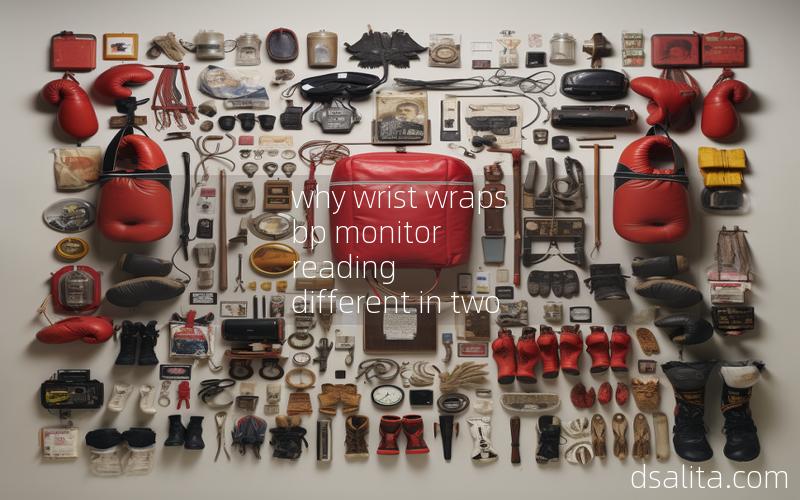Why Wrist Wraps Blood Pressure Monitor Reading Different in Two Hands
Wrist wraps blood pressure monitors are commonly used devices for measuring blood pressure conveniently at home. However, it is not uncommon to find different readings in the two hands when using these monitors. This discrepancy can be attributed to several factors, which we will explore in detail below.
1. Positioning of the Wrist Wrap
The positioning of the wrist wrap plays a crucial role in obtaining accurate blood pressure readings. If the wrap is not placed correctly on the wrist, it can lead to variations in the readings between the two hands. It is important to ensure that the wrap is snugly fitted and positioned at heart level.
2. Differences in Arm Circumference

Another factor that can cause variations in blood pressure readings is the difference in arm circumference between the two hands. If one arm is larger or smaller than the other, it can affect the accuracy of the readings. It is recommended to measure the circumference of both arms and select a wrist wrap that fits the larger arm properly.
3. Dominant Hand vs. Non-Dominant Hand
The dominant hand tends to have stronger muscles and may exhibit higher blood pressure readings compared to the non-dominant hand. This difference can be attributed to increased muscle activity and blood flow in the dominant hand. It is advisable to measure blood pressure in the same hand consistently for more accurate results.
4. Positioning of the Arm
The position of the arm during blood pressure measurement can also affect the readings. If one arm is positioned differently than the other, it can lead to variations in blood pressure readings. It is important to keep both arms in a relaxed and comfortable position, with the elbow supported at heart level.
5. Arterial Stiffness
Differences in arterial stiffness between the two hands can also contribute to variations in blood pressure readings. Arterial stiffness is the measure of how rigid or flexible the arteries are. If one hand has stiffer arteries, it may result in higher blood pressure readings compared to the other hand.
6. Cuff Size
The size of the cuff used in wrist wrap blood pressure monitors can also impact the readings. If the cuff is too small or too large for the arm, it can lead to inaccurate measurements. It is essential to choose a cuff size that fits the arm properly to obtain reliable readings.
7. User Error
In some cases, the discrepancies in blood pressure readings can be attributed to user error. Incorrect placement of the cuff, improper positioning of the arm, or failure to follow the instructions provided with the device can lead to inconsistent readings. It is crucial to carefully read and follow the manufacturer’s guidelines for accurate measurements.
8. Device Calibration
Calibration of the wrist wrap blood pressure monitor is essential for accurate readings. If the device is not properly calibrated or if it requires recalibration, it can result in variations between the readings in the two hands. Regular calibration of the device is necessary to ensure reliable measurements.
9. White Coat Syndrome
White coat syndrome refers to the phenomenon where individuals experience elevated blood pressure in a clinical setting due to anxiety or stress. This can lead to higher readings in one hand compared to the other. To minimize the impact of white coat syndrome, it is recommended to measure blood pressure in a calm and relaxed environment.
10. Body Position
The position of the body during blood pressure measurement can also affect the readings. If one hand is positioned differently than the other, it can result in variations in blood pressure measurements. It is important to sit or lie in a comfortable position with the back supported and the feet flat on the ground.
11. Temperature
Differences in temperature between the two hands can also influence blood pressure readings. Cold hands tend to have higher blood pressure compared to warm hands. It is advisable to warm the hands before measuring blood pressure to minimize temperature-related variations.
12. Movement
Movement during blood pressure measurement can introduce errors and lead to variations in readings. If one hand is moving more than the other, it can affect the accuracy of the measurements. It is important to keep both hands still and avoid talking or moving during the measurement process.
Conclusion
In conclusion, there are several factors that can contribute to different blood pressure readings in the two hands when using wrist wraps blood pressure monitors. These include the positioning of the wrist wrap, differences in arm circumference, dominant hand vs. non-dominant hand, positioning of the arm, arterial stiffness, cuff size, user error, device calibration, white coat syndrome, body position, temperature, and movement. Understanding and addressing these factors can help improve the accuracy and reliability of blood pressure measurements with wrist wrap monitors.

 Dsalita Boxing
Dsalita Boxing






